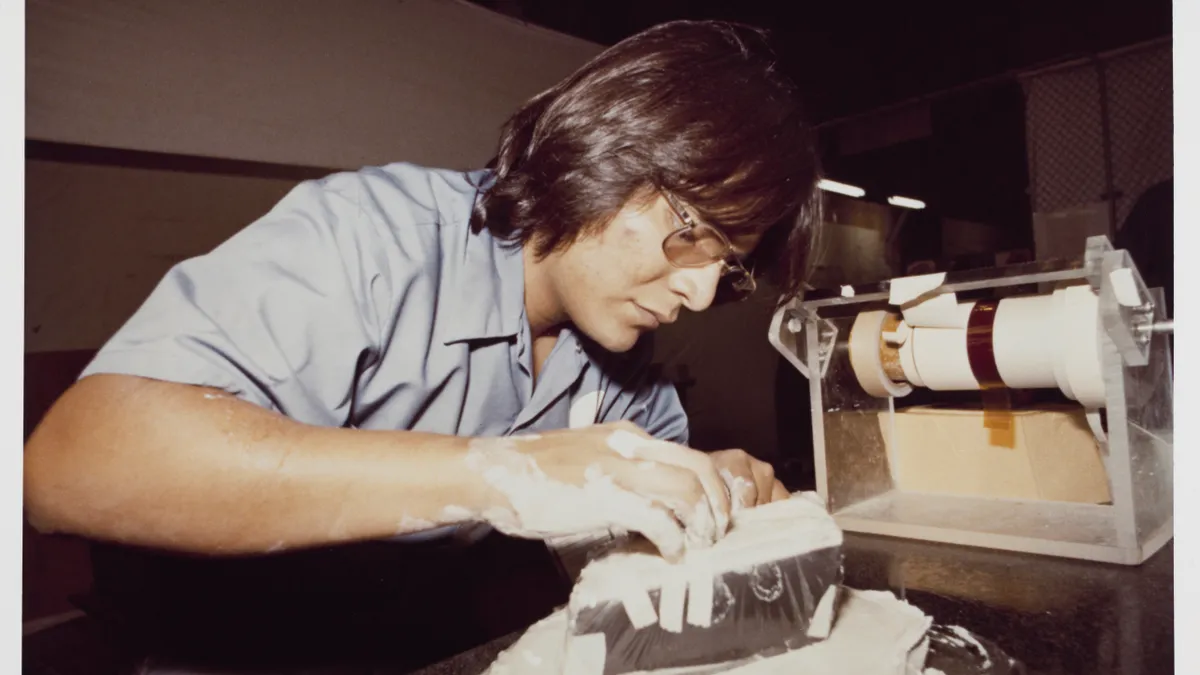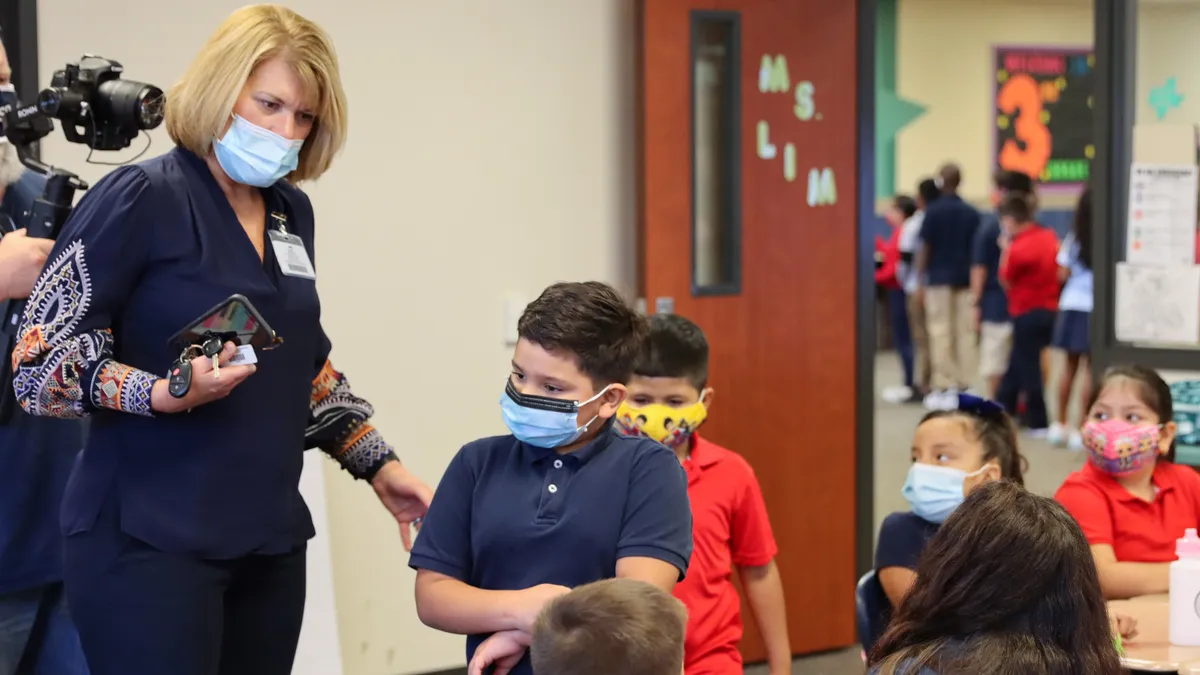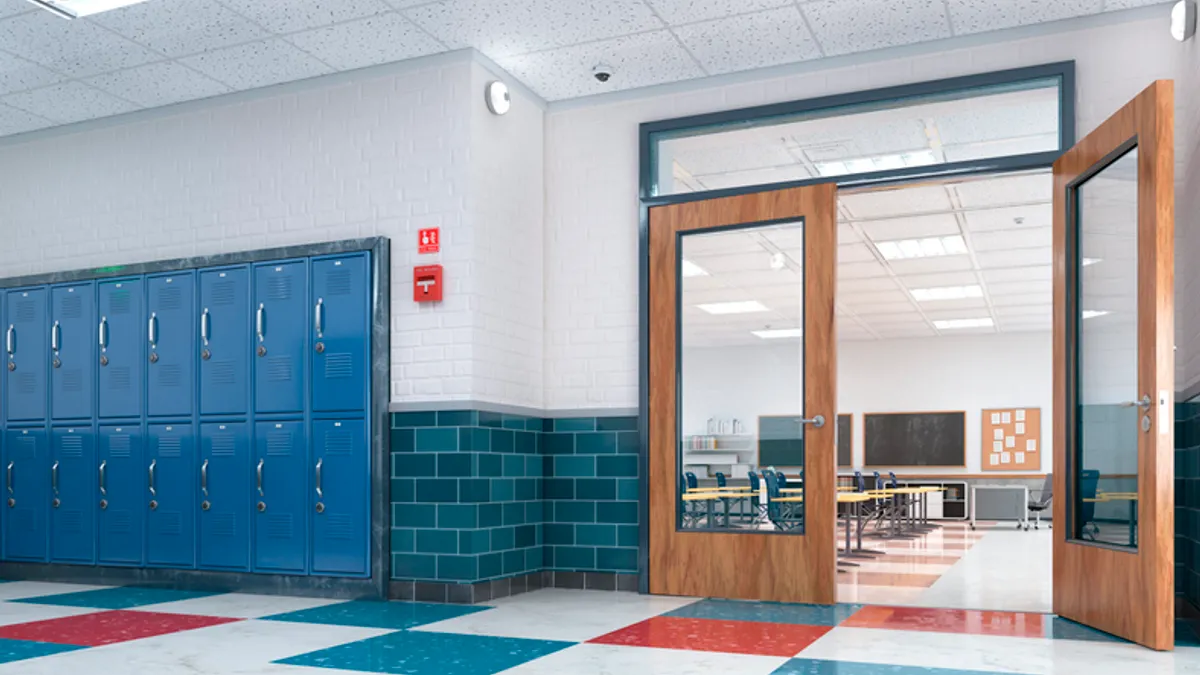Young adults are facing lengthier and more complicated pathways to quality jobs as postsecondary education has grown more valuable in the labor market — and those pathways aren't equal for those of different races and genders.
That's the top takeaway from two new reports released Thursday by the Georgetown University Center on Education and the Workforce. Most of the oldest millennials didn't settle into good jobs until their early 30s, the reports found. In contrast, older members of the baby boomer generation mostly found good jobs by their mid-20s.
As they aged, the share of millennials with good jobs started to outpace that of boomers when they were the same age, according to the reports. But the longer transition period can still mean consequences for the younger generation, like not being able to pay off student loans, buy a house or chase new dreams.
"Even though young adults, especially if they're on the bachelor's pathway, can catch up to where the previous generation was, that delay has real consequences for what they're able to do with their lives," said Kathryn Peltier Campbell, associate director of editorial policy at the Georgetown CEW and one of the authors of the reports.
The reports identified three major barriers for young people seeking quality jobs: rising postsecondary education costs, limited access to high quality work-based learning, and inadequate counseling and career-navigation services. They said these barriers are exacerbated by discrimination.
"Young people today have more equal access to opportunity compared to previous generations, but their chances of succeeding in the American economy are far from equitable," said one of the reports, which focused on how racial and gender bias block access to good jobs.
The Georgetown CEW has long studied the way higher education affects students' career outcomes. Within the last eight months, it has published reports comparing earnings for college attendees versus high school graduates, highlighting colleges that offer low-income students high returns on investment, and showing how substantially additional levels of education boost lifetime earnings.
In short, the center has found that more education generally means more earnings. But a student's occupation, field of study, college choice and program matter.
Thursday's reports stand out because they show that layers of interconnected factors like family background and degree choice affect life outcomes. Those elements interact to limit opportunity among the current generation of young workers in ways that are different from the experiences of previous generations, Campbell said.
"There's a feedback loop," Campbell said. "It's this cascading impact that the system has on what opportunities the system has for young people based on their race, class and gender."
The reports lay out concerns about the current dynamic.
"The education gap affecting the likelihood of having a good job is calcifying socioeconomic divides between college haves and have-nots, limiting upward mobility, and feeding into class resentments," an executive summary of the reports said.
Today's workers take more time to secure good jobs
The reports define a good job as allowing someone to be economically self-sufficient. Nationally, that means paying at least $35,000 for workers under 45 years old and at least $45,000 for those who are older.
That can vary based on geography because of different costs of living. The median good job in the country pays $57,000 for workers aged 25 to 35.
Today's good jobs require employees with more education and work experience than did those of the past, the reports said. This means young adults need stronger resumes to launch their careers, and it takes more time for them to secure good jobs.
The reports compare two birth cohorts: baby boomers born from 1946 to 1950, and millennials born from 1981 to 1985. Nearly 50% of the boomers in the labor force had good jobs when they were 25 years old. Less than 45% of millennials could say the same.
This isn't the whole story, however. The millennial cohort started doing better on average than the boomers around age 30. By 35, more than 60% of the millennials had a good job, compared to slightly more than half of the boomers.
Education was a great divider among millennials. Some 80% of the millennial cohort with a bachelor's degree or higher had a good job at age 35, compared to only 56% with some college or an associate's degree. Meanwhile, good jobs were only held by 42% of those holding just a high school diploma and 26% who hadn't earned a high school diploma.
Comparing generations and their level of educational attainment, the reports' authors found only one group of workers in the millennial cohort that's more likely to hold a good job than its corresponding boomer cohort: workers with a bachelor's degree or higher.
That means educational disparities among different races, ethnicities and genders have grown more important. Millennials are the most diverse generation currently in the workforce, the reports said.
Opportunity diverges by race, ethnicity and gender
The topline findings obscure significant differences that emerge by drilling down into gender, race and ethnicity data.
Young women in the labor force stand a better chance of having a good job today than they did a generation ago, but they still trail young men. Workers who are Black or African American, or Hispanic or Latino, also held good jobs at significantly lower rates than White workers.
More than six in 10 Asian American men and White men in the labor force had a good job, the highest shares among demographic groups the reports examined. At the other end of the spectrum were Hispanic and Latina women, just 29% of whom held good jobs.
"Race/ethnicity and gender unjustly influence a person's likelihood of having a good job," the reports' executive summary says. "The resulting hierarchy reflects differences in access to opportunity all along young people's education and career pathways, beginning in early childhood and extending into their careers."
Children of parents with high socioeconomic status have a significantly better shot at holding good jobs as young adults, the reports found. A decade after 10th grade, 34% of those with a parent from the highest socioeconomic quintile hold good jobs, versus just 19% of those with parents from the lowest quintile.
Well-off parents are best positioned to make sure their children have social and academic supports, the reports said. They can choose to live in neighborhoods with well-funded public schools, for example. Children of less wealthy parents or those who didn't go to college "are left to rely on the weakest links of our unequal and often inadequate public education system for crucial social and academic supports," the reports said.
Proposed reforms
Education alone can't close the observed gaps, the reports argue. They call for wide-ranging policy reforms to give young adults an equal chance at financial stability:
- Embrace the country's diversity with investments like culturally responsive teaching and counseling.
- View policy and program reforms through an equity lens, measuring inequality and working to address it.
- End funding inequalities and provide targeted, wraparound supports to young people, including high-quality universal prekindergarten and equitably funded public schools.
- Invest in programs that treat education and labor markets as a single system and include employer involvement.
- Help young people, especially those who are marginalized, by exposing them to careers and work-based learning starting in middle school and continuing through college.
- Create a career navigation system that is transparent and data-based. Make it accountable for equitable and effective outcomes. Have high schools and postsecondary providers offer courses for credit in which students lay educational and career plans.
- Make college more accessible, and narrow the racial and ethnic gaps in college financing. This can be done by investing in free college, incremental credentialing, community college baccalaureate programs and better college transfer pathways.
College leaders must give students the information they need to consider their future opportunity when picking a major and career path, said Artem Gulish, senior policy strategist and research faculty at the Georgetown CEW and an author of the reports. They should also remember that work experience like internships, apprenticeships or other work-based learning are important in today's job market, he said.
Gulish suggested incremental or stackable credentialing, which can open up higher education for underrepresented students who may not be able to dedicate large chunks of consecutive time to pursuing a degree. And he highlighted the cost of education as an important consideration.
"Cost has a real impact on students and young adults' financial well-being," Gulish said.
For employers, promoting equity is a key takeaway, according to Gulish.
"Many of these social networks and systems that employers rely on are inherently skewed toward more advantaged groups of young people," he said. "So employers have to proactively counter that."
Gulish argued that employers stand to benefit from engaging the education system to provide work-based learning opportunities. Doing so can help them bring young workers into their fields early to partially compensate for retiring baby boomers, he said.
























